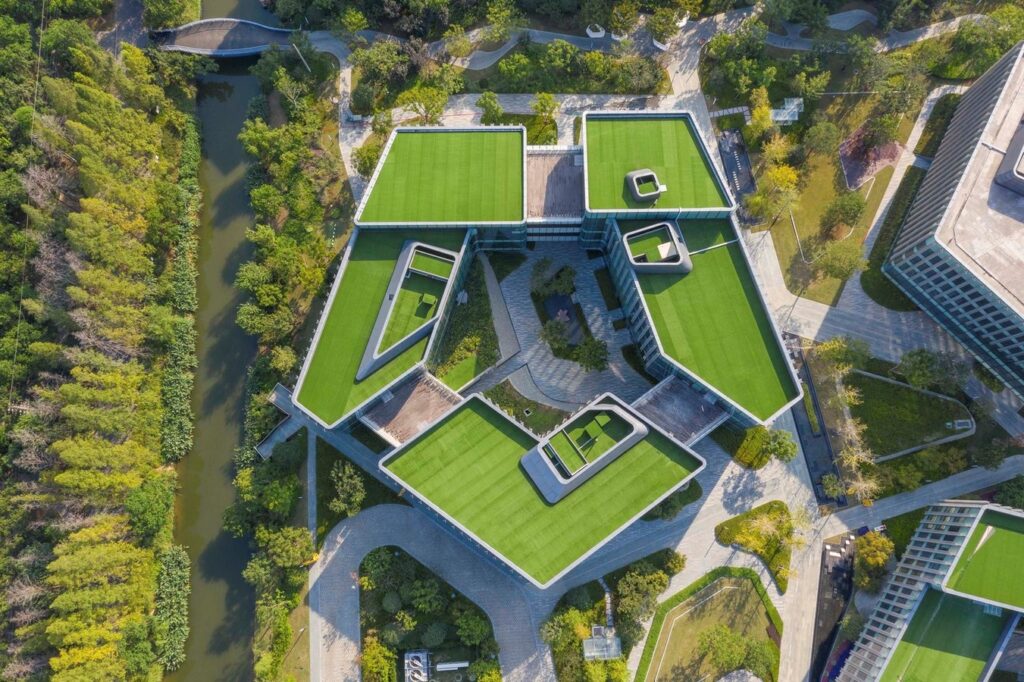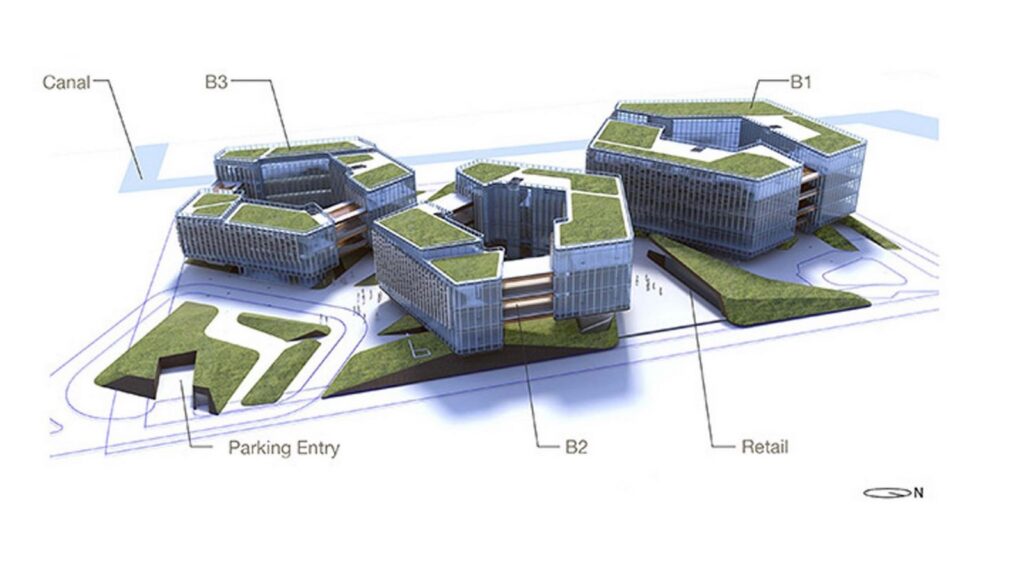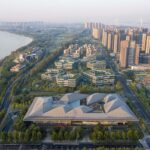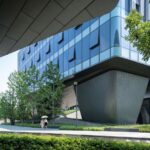Sustainable Urbanism Nanjing Eco Hi-Tech Island

Promoting Eco-Urbanism in Nanjing
The Xin Wei Yi Technology Park within the Nanjing Eco Hi-Tech Island stands as a beacon of smart eco-urbanism amidst China’s rapid urban expansion. Located just 6.5 kilometers from Nanjing’s downtown area, the island serves as a catalyst for economic progress while prioritizing sustainable development.

A Hub for Innovation and Sustainability
Designed to be Nanjing’s epicenter for high-tech innovation and ecological awareness, the Xin Wei Yi Technology Park offers a diverse range of mixed-use spaces. These include office buildings serving as incubators for technology and environmental companies, along with cultural venues and public promenades, catering to both locals and tourists.

Human-Centric Design
The park’s design emphasizes human-scale spaces and cultural integration. The Exhibition Hall, with its distinctive roofline inspired by neighboring mountains, sets the tone for the campus. Symbolizing the peaks of Zhong and Stone Mountains, the roof features light cannons that illuminate the expansive interiors. The Office Research Buildings draw inspiration from traditional Chinese architecture, blending modern functionality with historical aesthetics.

Addressing Sustainability Challenges
Amidst China’s ongoing sustainability discourse, the Xin Wei Yi Technology Park sets a new standard for environmentally conscious design. Incorporating green features such as site integration, daylight harvesting, and water reclamation, the project aims to mitigate carbon emissions and combat environmental degradation.
Energy-Efficient Solutions
The Exhibition Hall boasts a dual-layer roof design and cantilevered eaves, significantly reducing energy consumption. Light studies have optimized the roof peaks to maximize daylight penetration, while a geothermal heat pump system further enhances energy efficiency, resulting in over 30% lower energy use compared to conventional buildings.

Innovative Workplace Environments
The Office Research Buildings prioritize natural ventilation and daylighting through elevated designs and pentagonal shapes. Strategic placement of vertical fins maximizes passive cooling and maintains unobstructed views. Rooftop gardens and terraces not only eliminate water runoff but also provide recreational spaces for office workers and visitors.

Water Conservation Strategies
Rainwater harvesting and native plantings help reduce water consumption and control runoff, contributing to the park’s eco-friendly ethos. These initiatives showcase the project’s commitment to sustainability and its role as a model for future urban developments in China.
- Exterior photography of the architectural design of the Eco-Tech located in the Nanjing, China. Photography commissioned by NBBJ Architects. Paul Dingman Photographer






























